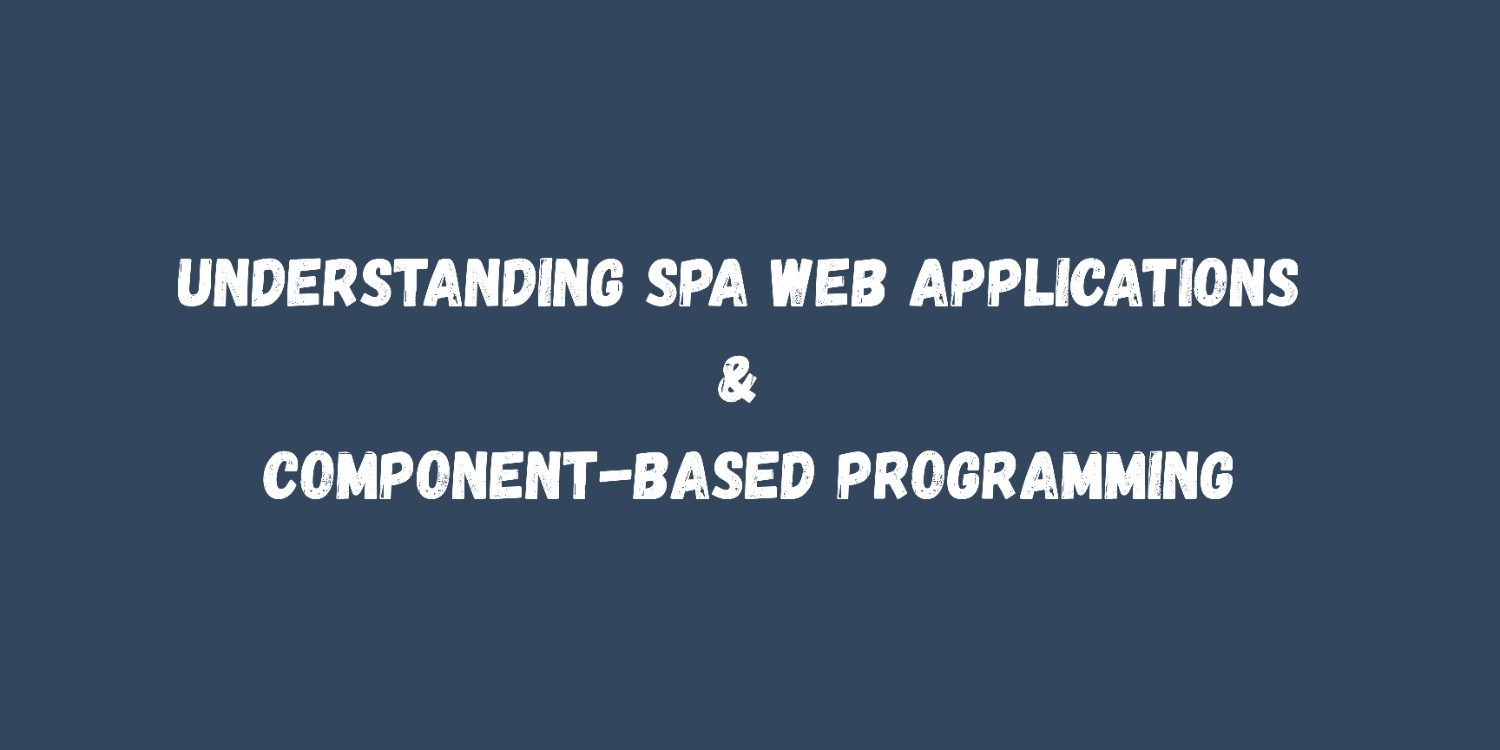Understanding SPA Web Applications & Component-Based Programming
Modern web development has evolved beyond static pages and full-page reloads. Today, Single Page Applications (SPA) and Component-Based Programming are at the core of building admin panels, dashboards, and real-time user interfaces. Let’s break it down in simple terms. 🧩 What is a SPA (Single Page Application)? A Single Page Application is a web app […]

Modern web development has evolved beyond static pages and full-page reloads. Today, Single Page Applications (SPA) and Component-Based Programming are at the core of building admin panels, dashboards, and real-time user interfaces.
Let’s break it down in simple terms.
🧩 What is a SPA (Single Page Application)?
A Single Page Application is a web app that loads a single HTML page and dynamically updates content without refreshing the whole page. Instead of navigating from one page to another, the content changes inside the browser using JavaScript.
🔁 Traditional vs SPA
| Feature | Traditional Website | SPA Web App |
|---|---|---|
| Page Reload | Full reload on navigation | No reload, dynamic update |
| Speed | Slower experience | Fast and fluid UX |
| Server Requests | Every page hit hits server | Data fetched via API |
| Tech Stack | PHP/jQuery | Vue, React, Angular |
🧑💻 Why SPAs are Ideal for Admin Panels and Dashboards?
Admin panels and dashboards often require:
- Instant updates (like charts, forms, filters)
- Reusable UI sections
- Data-heavy views (tables, analytics)
- Real-time feedback and interactivity
SPA frameworks handle these needs efficiently. Instead of full page reloads, SPAs update only the parts that need to change — making the interface faster and more responsive.
🧱 What is Component-Based Programming?
Component-Based Programming (CBP) is a modular approach where your application is built from small, reusable pieces called components.
Each component can be:
- A button
- A table row
- A user form
- A notification box
- A modal dialog, etc.
These components are like Lego blocks — you build the whole UI by combining them.
🧬 Basic Concepts of Components (Common in Vue, React, Angular):
Here are some universal concepts across most component-based frameworks:
📦 1. Props (Properties)
Props are used to pass data from parent to child components.
<!-- Example in Vue -->
<UserCard :name="John Doe" :email="john@example.com" />🔁 2. Two-Way Binding
Keeps the data in sync between UI and logic. Change in input updates the variable, and vice versa.
<input v-model="username" /> <!-- Vue two-way binding -->⚙ 3. Methods
Reusable functions inside components to handle logic.
methods: {
submitForm() {
// Handle form submission
}
}⚡ 4. Built-in Events
Events like click, change, submit, etc., used in the template.
<button @click="submitForm">Submit</button>📢 5. Custom Events
Child component emits an event that the parent can listen to.
this.$emit('user-created', newUser);👂 6. Event Listeners
Parent can listen to custom events.
<UserForm @user-created="refreshList" />🛠️ How Components Make SPAs Easier
- Reusability – Write once, use anywhere.
- Isolation – Each component handles its own data and logic.
- Maintainability – Easier to debug and extend.
- Faster Rendering – Only parts of the page that need change are re-rendered.
- Better State Management – Especially with tools like Vuex or Redux.
❓ How SPAs Differ from jQuery-Based Apps
| Feature | jQuery App | SPA with Components |
|---|---|---|
| DOM Manipulation | Manual, error-prone | Declarative & reactive |
| State Handling | Global variables, complex | Scoped and reactive |
| Data Binding | Manual DOM update | Auto sync (one/two-way) |
| Maintainability | Messy with large apps | Clean and modular |
| Performance | Slower with lots of DOM changes | Optimized updates |
🌍 Where Can You See SPAs in Action?
- Admin dashboards (e.g., Laravel Nova, Statamic)
- Google Docs, Gmail
- CRMs like Zoho or Salesforce
- Ecommerce admin panels
- Real-time analytics dashboards
📌 Final Thoughts
If you’re building:
- Admin interfaces
- Finance/accounting dashboards
- Complex user flows
...then moving from traditional page-by-page logic (jQuery, PHP) to a SPA with component-based architecture is a game changer.
It gives your users a fast, modern, and app-like experience — while making your codebase more organized and scalable.
🚀 Suggested Frameworks for SPA Development:
- Vue.js – Beginner-friendly, great documentation.
- React – Popular, strong community.
- Angular – Full-featured but more complex.
- Livewire (Laravel) – Great for PHP devs with SPA-like interactivity.



![How to Fix: “SQLSTATE[42000]: Specified key was too long; max key length is 1000 bytes” in Laravel Migration (MySQL)](https://ghanshyamashra.online/wp-content/uploads/2025/04/learn-to-fix-specified-key-was-too-long-mysql-laravell0SQLSTATE42000-1071-300x300.jpg)

